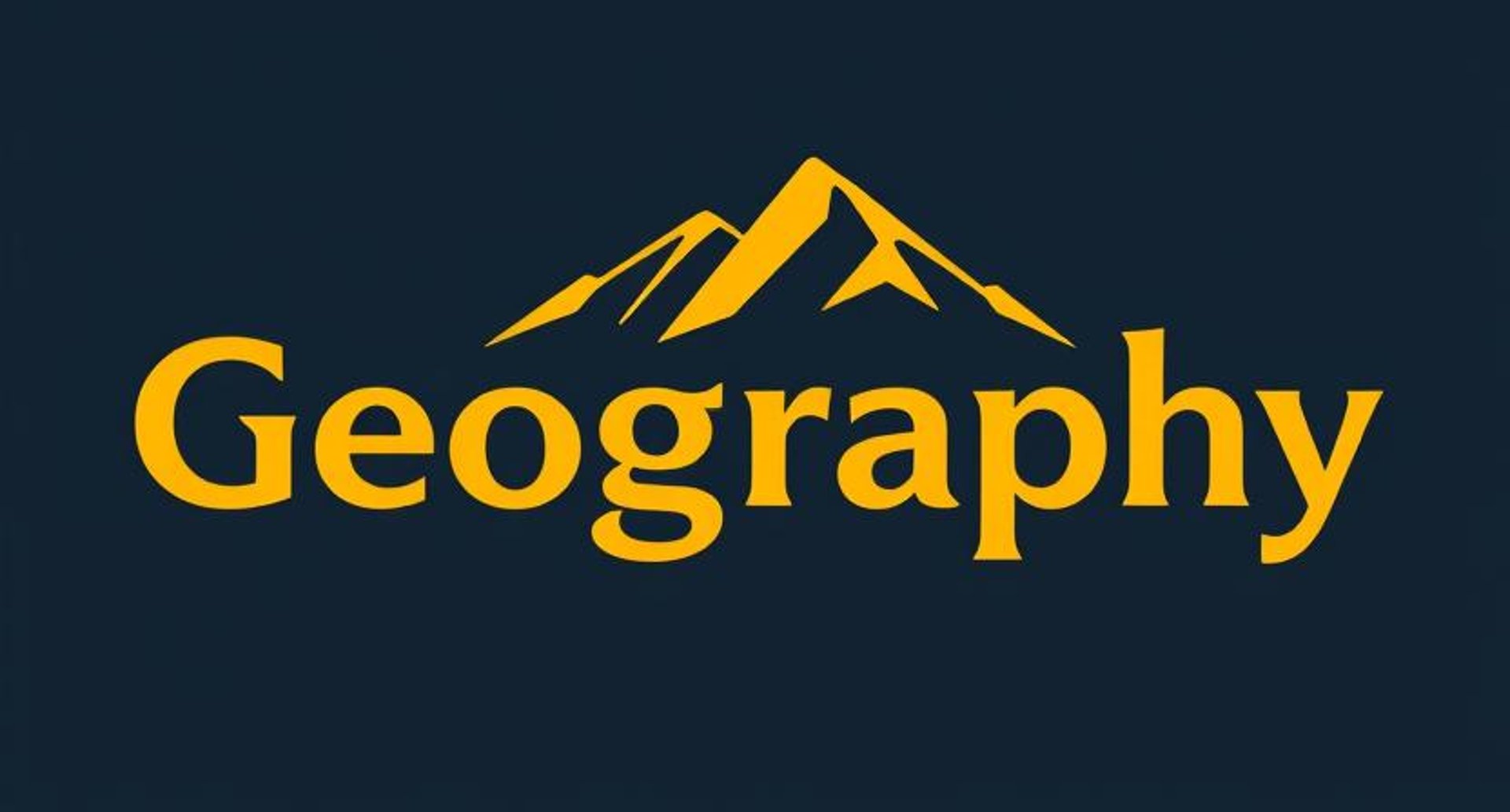
A Comprehensive Guide to Geography
Exploring the World
steeve
3/23/20254 min read

Exploring the World – A Comprehensive Guide to Geography
Index
Chapter 1: Introduction to Geography
1.1 What is Geography?
1.2 Branches of Geography
1.3 Importance of Geography
Chapter 2: The Earth and Its Structure
2.1 Layers of the Earth
2.2 Plate Tectonics and Continental Drift
2.3 Earthquakes and Volcanoes
Chapter 3: Weather and Climate
3.1 Difference Between Weather and Climate
3.2 Climate Zones of the World
3.3 Factors Affecting Climate
Chapter 4: Physical Geography
4.1 Landforms and Their Formation
4.2 Rivers, Lakes, and Oceans
4.3 Deserts and Forests
Chapter 5: Human Geography
5.1 Population and Settlement Patterns
5.2 Urbanization and Industrialization
5.3 Economic Activities and Global Trade
Chapter 6: Environmental Geography
6.1 Natural Resources and Conservation
6.2 Climate Change and Its Effects
6.3 Sustainable Development
Chapter 1: Introduction to Geography
Lesson 1: What is Geography?
Geography is the study of the Earth’s physical features, climate, and the human activities that shape and are shaped by these environments. It covers the spatial aspects of natural and human phenomena.
📌 Wikipedia Link: Geography
📌 YouTube Video: https://youtu.be/VQ18cFkbd9Y?si=f9LXVNhrjdNhU3R0&t=18{in hindi},https://www.youtube.com/watch?v=93LLwiMjDko&t=147s{in english}
Lesson 2: Branches of Geography
Geography is broadly divided into two main branches: Physical Geography and Human Geography.
Physical Geography examines natural environments and processes (landforms, climate, ecosystems).
Human Geography explores human activities, cultures, and their interactions with the environment.
📌 Wikipedia Link: Branches of Geography
📌 YouTube Video: https://www.youtube.com/watch?v=RjUyXrYMKDw{in english},https://www.youtube.com/watch?v=-ho3R53TkYA{in hindi}
Lesson 3: Importance of Geography
Geography is essential in helping us understand our world. It informs urban planning, disaster management, climate studies, and sustainable development by analyzing spatial patterns and environmental processes.
📌 Wikipedia Link: Applications of Geography
📌 YouTube Video: https://youtu.be/pVBd_7rK00w?si=dazE-2kdiGsiZUeA&t=7{in hindi},https://youtu.be/RcXBVrBqY00?si=XbGEdOwpvi5JmhaK&t=5{in english}
Chapter 2: The Earth and Its Structure
Lesson 4: Layers of the Earth
The Earth is composed of several layers:
Crust: The outermost solid layer.
Mantle: The thick layer of hot, semi-solid rock beneath the crust.
Outer Core: The liquid layer made primarily of iron and nickel.
Inner Core: The solid central part of the Earth.
📌 Wikipedia Link: Structure of the Earth
📌 YouTube Video: https://youtu.be/VI-QMnwsns8?si=ttvrsLImmVWUNt7B&t=26{in hindi},https://youtu.be/eXiVGEEPQ6c?si=Kk4-KKrQiM9PbvP6&t=28{in english
Lesson 5: Plate Tectonics and Continental Drift
The theory of plate tectonics explains how the Earth’s lithosphere is divided into plates that move over the mantle. This movement causes continental drift, leading to the formation of mountains, earthquakes, and ocean trenches.
📌 Wikipedia Link (Plate Tectonics): Plate Tectonics
📌 Wikipedia Link (Continental Drift): Continental Drift
📌 YouTube Video: https://www.youtube.com/watch?v=fueZB1BxLBI{in hindi},https://youtu.be/vxmoxDznXe4?si=3X6dhZmH_KHOA6AX&t=7{in english}
Lesson 6: Earthquakes and Volcanoes
Earthquakes: Sudden shaking of the Earth caused by the movement of tectonic plates.
Volcanoes: Openings in the Earth’s surface from which magma and gases erupt.
📌 Wikipedia Link (Earthquakes): Earthquake
📌 Wikipedia Link (Volcanoes): Volcano
📌 YouTube Video: https://youtu.be/TJ20Ho-wz_8?si=Nuzd2O_hwqP45aaF&t=21{in hindi},https://youtu.be/5wC4rF7YPAM?si=ac3tZU9nTtZHQZR6&t=13{in english}
Chapter 3: Weather and Climate
Lesson 7: Difference Between Weather and Climate
Weather: Refers to short-term atmospheric conditions in a specific place and time.
Climate: Describes the long-term patterns and average conditions of the atmosphere over extended periods.
📌 Wikipedia Link (Weather): Weather
📌 Wikipedia Link (Climate): Climate
📌 YouTube Video: Add your YouTube link here
Lesson 8: Climate Zones of the World
The Earth is divided into different climate zones such as tropical, temperate, and polar, largely classified by the Köppen climate classification system.
📌 Wikipedia Link: Köppen Climate Classification
📌 YouTube Video: Add your YouTube link here
Lesson 9: Factors Affecting Climate
Various factors influence climate, including:
Latitude: Determines the amount of solar energy received.
Altitude: Higher altitudes tend to have cooler temperatures.
Ocean Currents: Can warm or cool coastal regions.
Wind Patterns: Affect temperature distribution and precipitation.
📌 Wikipedia Link: Climate
(This page discusses factors such as latitude, altitude, and ocean currents within its content.)
📌 YouTube Video: Add your YouTube link here
Chapter 4: Physical Geography
Lesson 10: Landforms and Their Formation
Landforms such as mountains, valleys, plateaus, and plains are created and altered by processes like tectonic activity, erosion, and weathering.
📌 Wikipedia Link: Geomorphology
📌 YouTube Video: Add your YouTube link here
Lesson 11: Rivers, Lakes, and Oceans
Water bodies play a key role in shaping the Earth’s landscape and supporting ecosystems.
Rivers: Flowing water that shapes valleys.
Lakes: Inland bodies of water.
Oceans: Vast saltwater bodies that cover most of the planet.
📌 Wikipedia Link (Rivers): River
📌 Wikipedia Link (Lakes): Lake
📌 Wikipedia Link (Oceans): Ocean
📌 YouTube Video: Add your YouTube link here
Lesson 12: Deserts and Forests
Deserts: Regions with little precipitation and sparse vegetation.
Forests: Areas dominated by trees and rich biodiversity.
📌 Wikipedia Link (Desert): Desert
📌 Wikipedia Link (Forest): Forest
📌 YouTube Video: Add your YouTube link here
Chapter 5: Human Geography
Lesson 13: Population and Settlement Patterns
Population distribution and settlement patterns are influenced by natural resources, climate, and geographical features.
📌 Wikipedia Link: Demography
📌 YouTube Video: Add your YouTube link here
Lesson 14: Urbanization and Industrialization
Urbanization refers to the increasing concentration of populations in cities, while industrialization involves the growth of industries, both profoundly influencing human geography.
📌 Wikipedia Link (Urbanization): Urbanization
📌 Wikipedia Link (Industrialization): Industrialization
📌 YouTube Video: Add your YouTube link here
Lesson 15: Economic Activities and Global Trade
Economic activities encompass production, distribution, and consumption of goods. Global trade connects countries through the exchange of these goods and services.
📌 Wikipedia Link (Economic Activity): Economic Activity
📌 Wikipedia Link (International Trade): International Trade
📌 YouTube Video: Add your YouTube link here
Chapter 6: Environmental Geography
Lesson 16: Natural Resources and Conservation
Natural resources like forests, water, and minerals are vital for survival and economic development. Conservation focuses on sustainable management to protect these resources.
📌 Wikipedia Link: Natural Resource
📌 YouTube Video: Add your YouTube link here
Lesson 17: Climate Change and Its Effects
Climate change involves long-term shifts in temperature and weather patterns. Its effects include rising sea levels, more frequent extreme weather events, and biodiversity loss.
📌 Wikipedia Link: Climate Change
📌 YouTube Video: https://www.youtube.com/watch?v=wWr08Fndwm8&list=PLOPRSIT7epTZIKSE7W8fD4V4TwvAb8ezA
Lesson 18: Sustainable Development
Sustainable development is the practice of meeting current needs without compromising the ability of future generations to meet their own needs, balancing economic, social, and environmental goals.
📌 Wikipedia Link: Sustainable Development
📌 YouTube Video: Add your YouTube link here
